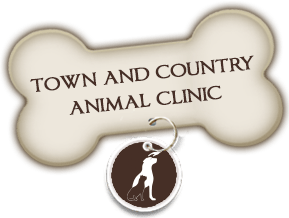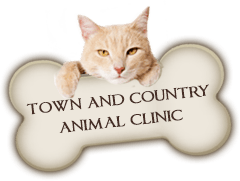On average more than 90% or pets over 2 years of age have significant dental disease. Out of that 90%, it’s estimated that 50 % require immediate attention. Because of these high numbers we wanted to educate you on how to identify and prevent the progression of dental disease in your cat and dog.
In order to fully explain in detail the process that is occurring in your pet’s mouth, we will start by defining some of the terms:
Plaque: is composed primarily of bacteria (over 80%) but also contains saliva and food debris. It is soft substance and is also difficult to see with the human eye.
Calculus/Tartar: is when the plaque on the surface of the teeth accumulates minerals and then hardens over time.
Gingivitis: inflammation of the gums caused by plaque and tartar accumulation.
Gingival Sulcus: refers to the debris in the space between the tooth and gums.
Periodontal Disease: the process in which the supporting structures of the tooth to degenerate.
Periodontal Pockets: when the gums become separated from the tooth.
Resorptive Lesions/Dental Neck Lesions: a dental disorder in which portions of the teeth dissolve or are resorbed at the gum line exposing the sensitive inter structures of the tooth causing considerable pain and discomfort. This condition is most commonly found in cats.
Dental disease occurs when plaque is deposited on the irregular surfaces of the teeth. Over time and with the addition of minerals, the plaque hardens and forms calculus. The plaque and calculus formation occurs in all dogs and cats at various rates. Generally speaking , the small breed dogs (such as Yorkshire Terriers, Chihuahuas, Toy Poodles) are more prone to tartar buildup. This is possibly due to feeding your pet soft food, as well as overcrowding and abnormal angulation of their teeth. The accumulation of plaque and tartar on the tooth lead to gingivitis. The debris in the space between the teeth and gums cause irritation and infection to the tooth. If this process goes unchecked, the supporting structures of the tooth degenerate (periodontal disease). Once established, periodontal disease is very difficult to cure but the progression can be slowed. Deep pockets can fill with debris and puss which can lead to bad breath. This will also cause the gums to become separated from the tooth (periodontal pocket) and the supporting bone recedes. This causes much pain and discomfort to your pet and can lead to tooth abscess and eventually tooth loss.
Stages of Dental Disease: We rate the level of dental disease that your pet has in four stages. Here is what is occurring in your pet’s mouth through all of these stages.
Grade 1: Dental plaque is present on the surface of the teeth. Bad breath and gingivitis occur even though the teeth appear “clean”.Grade 2: Tartar is present on the surface of the teeth. Increased inflammation (gingivitis) is present along with swelling of the gum line.
Grade 3: tartar is covered with a layer of plaque causing the process to continue. Further inflammation (gingivitis) is present along with some loss of tissue attachments and the beginning of bone loss.
Grade 4: Gingivitis has progressed to become infected tissue with gum recession and bone loss present. If left untreated this may lead to loss of the tooth.
A simple dental infection can spread and infect internal organs of your pet. How it happens is as plaque builds up of the teeth, the bacteria multiply on the teeth and gums. The bacteria irritate the gums which become tender, red and swollen. Eventually, the inflamed gums pull away from the teeth, creating a periodontal pocket that trap even more bacteria. The pockets deepen and the bacteria begin to attack the roots of the teeth and jaw. Once the gums reach this stage of deterioration they bleed slightly every time the animal eats or chews. The bleeding allows bacteria into the animals main bloodstream. This is where the danger lies. Once bacteria enter the bloodstream, they can travel to major organs and begin infections there. The organs with the highest blood flow are most susceptible to such an infection. Such as the lungs, heart, kidneys, liver and in some cases the nervous system. Because of this it is important to your animals overall health to maintain good dental hygiene.
In order to maintain good dental hygiene for your pet, we recommend brushing their teeth a minimum of 3 to 4 times per week. (See next week’s blog on how to brush your cat or dog’s teeth.) Ideally specialists recommend that their teeth be brushed daily to prevent dental disease from occurring. Once your pet has Grade 2 dental disease or higher it will require a professional dental cleaning in order to remove the tartar and plaque off the surface of the teeth. This does require a general anesthetic as we cannot explain to our furry friends to sit still while perform the hand cleaning, scale and polish, fluoride treatment. Unfortunately we can only determine if extractions will be necessary once your animal is under anesthetic and the tartar has been removed from the teeth. Then we can visually see if there is gum recession, pockets present or mobile teeth which would require extraction. In some instances a radiograph is required to determine if there is any damage to the root of the tooth which would require it to be extracted. Once the professional dental cleaning has been performed, we recommend brushing a minimum of 3 to 4 times per week, again to maintain dental hygiene.
We also recommend using dental diets (Hill’s Prescription t/d: http://www.hillspet.ca/en-ca/en-ca/products/pd-canine-canine-td-dry-dry.html, or Royal Canin Dental: http://www.royalcanin.ca/index.php/Veterinary-Exclusive-Nutrition/Canine-Nutrition/Veterinary-Care-Nutrition/Dental-Dry ) to help scrap the teeth clean and prevent the build-up of tartar. There are also treats available with enzymes in them to help clean the teeth (http://www.virbac.ca/dental) or toys where the size and shape will help promote dental health. The best way to maintain your pet’s dental health is by having regular dental exams to determine what prevention or stage of treatment is best to give your pet the celebrity white smile.
www.TownandCountryAnimalClinic.ca
The information from this blog was provided by: http://www.ovma.org/pet_owners/pet_health/dental_disease.html








